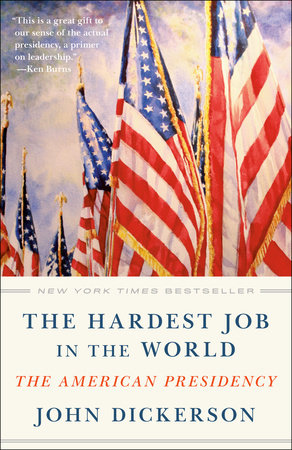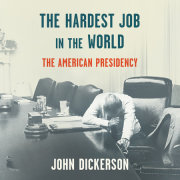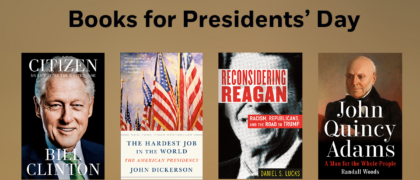Chapter 1Executive in ChiefIt is not because I do less than I might do, but that I have more than I can do.—Thomas Jefferson
The president needs help.—The Brownlow Committee Report, 1937
Looking to the President for Solutions
On April 7, 1938, protesters descended on Washington in a state of alarm. The Constitution was in danger. America’s chief magistrate, Franklin Delano Roosevelt, was trying to seize power by expanding the size and scope of his office.
Waving placards in front of the White House and marching through the halls of Congress, the protesters represented a host of sturdy citizen organizations: the Committee for the Preservation of America, National Defenders of the Constitution, Women Investors in America, the Paul Revere Riders. Their target was the Reorganization Act, a piece of legislation that would streamline the executive branch and beef up the president’s staff.
The excitement in the streets marked a new chapter in a longer, historic clash over the presidency: whether the changes in the presidency, sold as necessary by its occupants, were undermining liberty and the American experiment in self-government.
Mrs. Pauline Revere Auerhamer thought she knew the answer. In 1775, her great-great-grandfather Paul Revere rode his horse through the streets of Lexington, Massachusetts, warning of the British army’s advance. In 1938, Mrs. Auerhamer had organized one of the groups marching in what the International News Service called an “almost unprecedented popular protest.” The tone of the dispatch then turned sociological: “Thousands of representatives of the ‘inarticulate middle class’ militantly descended upon the nation’s capital.”
One protester carried a sign that read we don’t want a dictator. Another sign demanded no one-man law! Another pleaded the country needs men, encapsulating the American tradition of equating standard-keeping with masculinity (which—in keeping with another stout American tradition—overlooked the fact that much of the energy for the protest came from women.) The group did not lack for a theatrical touch. The head of the New York delegation of Revere Riders dressed like the famous silversmith, from the buckles on his shoes to the corners of his tricorn hat.
The 1938 protesters might not have wanted a dictator, but five years earlier the country had been in the mood for one. When FDR came to office in 1933, the economic situation was so dire that even sensible people flirted with extreme measures. The presidency had been created to handle emergencies, and America was experiencing one. Why shouldn’t the president have the tools to get the job done? A New York Republican congressman told Roosevelt that Congress should “give you any power that you may need.” The columnist Walter Lippmann suggested the same. The New York Herald Tribune wrote an editorial entitled “For Dictatorship if Necessary.”
In 1933, William Randolph Hearst had tried to show the country just how appealing dictatorship might be. The newspaper tycoon had backed the movie Gabriel Over the White House, about a political hack whose bump on the head during an accident and subsequent bedside chat with the angel Gabriel turned him into a benevolent dictator who solved the country’s problems with ruthless efficiency. Reform measures included executing his gangster enemies by firing squad in front of the Statue of Liberty, which, as journalist Jonathan Alter points out, was considered by audiences and filmmakers alike as a perfectly fine thing to do. Hearst had hoped the movie might soften up the country for sweeping presidential action. He sent FDR a copy of the script, and Roosevelt returned the pages with a thumbs-up and a series of suggested edits.
With the rise of Hitler and Mussolini, people in polite drawing rooms ended their dalliances with dictatorship, but the taste for quick action would remain. The idea of endowing the presidency with extraordinary powers in times of need stretched back to the founders, who debated giving presidents dictatorial powers at the Constitutional Convention. Even Thomas Jefferson, a skeptic of concentrated power, allowed for strong action by the president in times of crisis. “The laws of necessity, of self-preservation, of saving our country when in danger, are of higher obligation,” he wrote. “To lose our country by a scrupulous adherence to written law, would be to lose the law itself, with life, liberty, property & all those who are enjoying them with us; thus absurdly sacrificing the end to the means.” This idea has lived on in modern-day clashes over executive power. The Constitution is not a “suicide pact,” as Supreme Court Justice Robert Jackson put it in 1947. Or, as Truman put it when he nationalized the steel companies to supply the Korean War, “The president has the power to keep the country from going to hell.”
Roosevelt’s predecessor, Herbert Hoover, had experienced what happened when a president couldn’t take action to fight a crisis. His name became synonymous with every brand of American disaster. Broken cars pulled by mules were known as “Hoover wagons.” Shantytowns were called “Hoovervilles.” Soup kitchen meals were “Hoover stew.” Newspapers used for warmth were “Hoover blankets,” and “Hoover hogs” were the jackrabbits too slow to escape the stewpot.
In a joke at the time, Hoover asked his treasury secretary, Andrew Mellon, “Lend me a nickel, I want to call a friend.” Mellon replied, “Here’s a dime, call all your friends.” The cautionary tale for FDR was how quickly fortunes could turn for a president. Hoover was once a global hero. During World War I, he had managed relief efforts and served as head of the economic restoration of Europe. It was part of the record of accomplishment that helped him get elected in 1928. Then, in a little more than a decade, the man whose ingenuity and skill had fed Europe became a symbol of stasis, hunger, and impotence. When he traveled, rotten eggs pelted his train. When a delegation of Palo Alto Girl Scouts presented Hoover with flowers, he finally let the tears run down his face, and a twelve-year-old asked her mother, “Mommy, what do they do to a president to make a man look like Mr. Hoover does?”
The challenges FDR faced upon taking office were steep. The unemployment rate in 1933, the year after he was first elected, was 25 percent, the highest it has been in modern times. Banks and businesses closed. People were forced from their jobs and homes. Millions starved. Roosevelt responded with “bold, persistent experimentation.” “Take a method and try it,” he implored in a 1932 commencement address to a younger generation. “If it fails, try another. But above all, try something.” President Coolidge, who had preceded Hoover, had usually finished his official day by lunchtime and is said to have believed a national leader should not try to “go ahead of the majestic army of human thought and aspiration, blazing new and strange paths.” This sounds like Coolidge, but the quote is actually one written by his secretary who took down his thoughts. FDR opened up new avenues of presidential action each day until after the sun had gone down. He seemed to be living by Ralph Waldo Emerson’s maxim “In skating over thin ice, our safety is in our speed.”
In his first hundred days alone, FDR pushed through the heavily Democratic Congress the Emergency Banking Act and National Industrial Recovery Act. He launched the Federal Emergency Relief Administration and Agricultural Adjustment Administration. Roosevelt initiated legislation, whereas before, presidents had only implemented policy that had been established by Congress.
The Great Depression and the Second World War presented challenges that only a president could meet. During his time in office, FDR issued 3,522 executive orders, almost surpassing the total that had been issued by the thirty presidents who preceded him. These emergencies increased the presidential role in setting industrial policy and regulating banking, agriculture, monetary policy, housing, taxation, trade, and employment.
As the political scientist Matthew Dickinson notes in his assessment of FDR’s request to expand the size of the executive office, Roosevelt not only accumulated power in the office, he created a new habit. In the future, Americans were “more likely to look to [the president] for solutions.”
FDR: “I Need Help”
The executive branch had been created to harness the energy of the executive, but it wasn’t equipped for Roosevelt’s energy. Cabinet secretaries were autonomous and their duties overlapped. Roosevelt had no efficient way to manage the conflicting authorities and egos. He tried and failed five different times to reorganize the relationships among his cabinet departments. Finally, with the capacity of the office stretched to its limit, FDR sounded his own alarm: “The president’s task has become impossible for me or any other man.”
Copyright © 2020 by John Dickerson. All rights reserved. No part of this excerpt may be reproduced or reprinted without permission in writing from the publisher.








